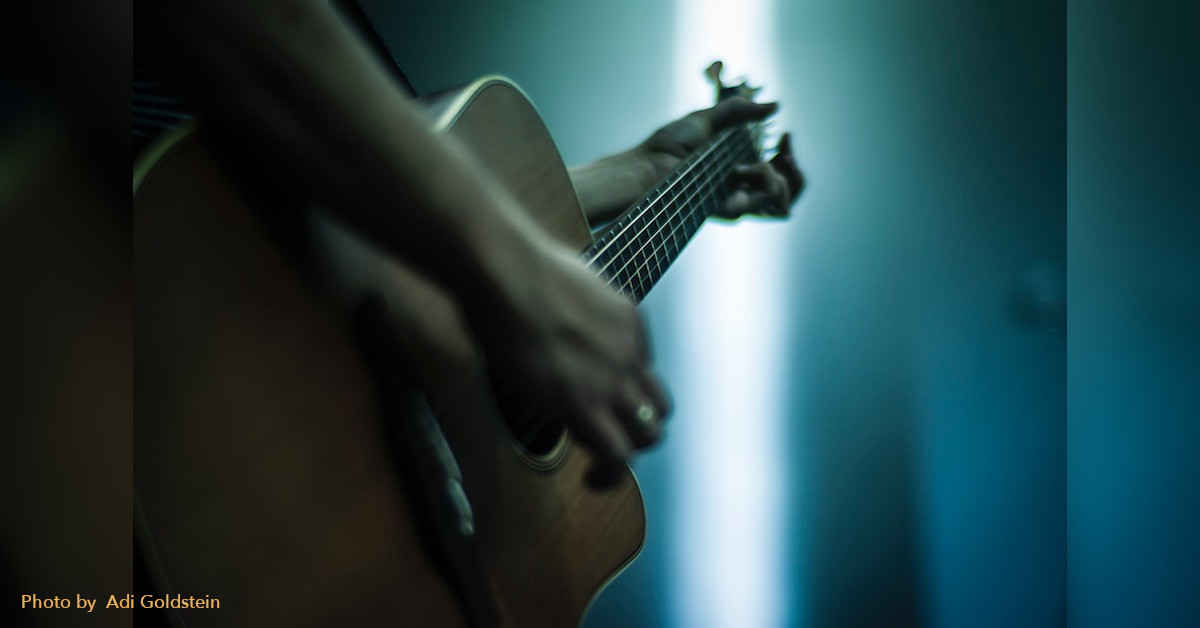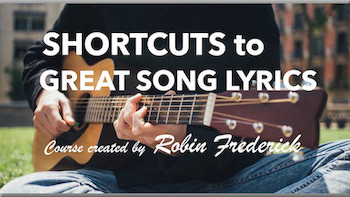
An image is a word or phrase that paints a picture in your mind. Words like highway, fire, clouds, angel, train, and river are images. The picture in your head may be somewhat different than the picture in mine, but essentially you and I are thinking along the same lines. If I add more description to the image, we can come very close to picturing the same thing: empty highway, raging fire, rain clouds, dancing angel, passenger train, and rushing river.
Using lyric imagery is like opening a door into your listener’s head. It’s impossible not to see a mental picture when we hear a visual word. If you say “rain,” your listener pictures rain. But that’s not all that happens. Along with that picture of rain, come all the associations they have with it: grey skies, the physical sensation of humidity, feeling cozy indoors and cold outdoors, a summer shower, a flood, the end of a drought. It depends on how you use it, but it will get a reaction.
To see and hear image words in action, take a look at a hit song like Katy Perry’s “Roar.” It’s full of images that evoke feelings of strength and power: tiger, fighter, fire, champion, and lion. And, of course, strength is what the song is about. Planting these images in the listener’s head helps the song get its message across in an immediate and powerful way.
Use an image group
The best images are the ones that don’t travel alone. They’re accompanied by related images, physical sensations, emotions, memories, and experiences. Think of it as a family that stays together.
As a songwriter, you can use these image groups to your advantage. While you can’t control all of the responses to an image your listener will have, there are plenty of shared associations you can count on, like those in the Katy Perry song I just mentioned. Associations like these add depth and richness to your lyric with no extra effort on the listener’s part. Play with them, use them to underscore your theme, you can get a lot of bang for your buck with an image that’s got a big family.
Using familiar images
“Prison” and “prisoner” are image words with a lot of associations. But a phrase like “I’m a prisoner of your love,” can work for and against you. The image of a prisoner along with its associations might add depth to your theme, but it’s been so overused that listeners may not feel the power or truth of it. To make an image like this work for you, freshen it up by varying the image itself: “Your love is holding me hostage.” Or, give us a new insight or twist on the image in the surrounding lines: “I’d give up my freedom to become a prisoner of your love.”
Watch out for conflicts
Be on the lookout for images with associations that conflict with your theme or with each other. These can create a distraction that drags your song down. If your singer says: “I drive a flashy pink Cadillac,” the listener is likely to assume the he’s a guy with a big ego, flashy and impulsive. It will be difficult to make them believe him if he then says: “I’m the salt of the earth” or “I’m as dependable as the rising sun.” Your listeners will end up spending a lot of time trying to reconcile these two sets of images instead of listening to your song.
Of course, it’s fine to use contrasting images if you want to demonstrate the difference between two people or things. Just make sure that’s what you intend to do and your listener gets a clear, focused message.
Songwriting techniques to try
Choose one of the images below. Make a list of related images, along with emotions, sensations, and ideas that you associate with those images. Write a verse or chorus using the image and some of your related ideas.
- A couple holding hands
- Children playing in the snow
- A full moon
- A lone figure walking on a beach
- A family dinner
- A hurricane
- An abandoned garden
- A crowded bus station
- A highway at night (See Tim McGraw’s “Highway Don’t Care” for ideas.)
- …or choose any image that interests you.
READ TIP #3: Write a melody listeners can’t get out of their heads

